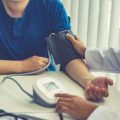Introduction to Rehabilitation in the UK
Rehabilitation services play a crucial role in supporting individuals recovering from illness, injury, or managing long-term health conditions. In the United Kingdom, navigating the rehabilitation landscape can be complex due to the presence of both NHS-funded and private pathways. Understanding these distinct options is essential for making informed decisions about care and recovery. General Practitioners (GPs) are often the first point of contact for patients seeking rehabilitation support. They not only assess a patients needs but also guide them through available choices, helping to determine whether an NHS or private route is most appropriate. The GP’s role in this process is central, acting as both gatekeeper and advocate, ensuring that each patient receives tailored advice that aligns with their medical requirements and personal circumstances. This article explores how GPs help patients navigate these pathways, highlighting the differences between public and private rehabilitation services within the unique context of the UK healthcare system.
2. The GP’s Central Role in Rehabilitation Decisions
General practitioners (GPs) in the UK act as pivotal gatekeepers within the rehabilitation journey, blending clinical assessment with practical guidance to ensure that patients receive the most suitable care. The process begins with a detailed evaluation of the patient’s medical history, current condition, and specific rehabilitation needs. This thorough assessment enables GPs to identify whether a patient requires physical therapy, occupational therapy, speech and language support, or a combination of services.
Once patient needs are clearly defined, GPs provide an overview of available pathways—primarily distinguishing between NHS and private rehabilitation options. They must explain the nuances of each route, considering factors such as waiting times, treatment intensity, location, and potential costs. Through open dialogue, GPs help patients weigh the advantages and limitations of both sectors.
How GPs Guide Patient Choices
| Aspect | NHS Rehabilitation | Private Rehabilitation |
|---|---|---|
| Access & Waiting Times | May involve longer waits due to demand and referral processes | Usually quicker access; appointments can often be arranged within days |
| Treatment Options | Structured programmes following NHS guidelines | Broader range of therapies; sometimes more tailored or intensive |
| Cost to Patient | No direct cost; funded by the NHS | Self-funded or covered by private insurance; fees vary widely |
| Location & Convenience | Limited to local NHS providers and facilities | Wider choice of locations and flexibility in scheduling |
| Continuity of Care | Integrated with wider NHS services for seamless follow-up | Care coordination may require additional communication between providers |
The Influence of GP Recommendations
A GP’s recommendation carries significant weight in shaping patient decisions. Many patients rely on their GP’s expertise not only for clinical advice but also for navigating administrative hurdles—such as completing referral paperwork or understanding eligibility criteria. GPs are trained to consider the patient’s social circumstances, preferences, and long-term outcomes when offering guidance. Ultimately, their input ensures that choices are both clinically appropriate and aligned with the patient’s expectations and resources.

3. Understanding NHS Rehabilitation Services
When it comes to rehabilitation, the NHS remains the primary point of access for most patients across the UK. General Practitioners (GPs) serve as crucial gatekeepers, helping individuals navigate what can sometimes feel like a complex system. NHS rehabilitation services are designed to offer comprehensive support for a range of conditions—be it recovering from surgery, managing chronic illness, or overcoming injury. These services typically include physiotherapy, occupational therapy, speech and language therapy, and specialist nursing care. The referral process usually begins with a consultation with your GP, who assesses your needs and determines whether an NHS rehabilitation pathway is appropriate. Once the need is identified, your GP will submit a referral to the relevant community or hospital-based team.
One aspect patients often encounter is waiting times. Due to demand and finite resources, there can be delays between initial referral and the commencement of therapy—sometimes ranging from several weeks to a few months depending on locality and service pressure. GPs do their best to manage expectations, keeping patients informed about likely wait times and interim steps they can take at home. Despite these challenges, many patients report that NHS rehab teams are skilled, empathetic, and dedicated once treatment begins. Sessions may occur in hospitals, community clinics, or even at home, ensuring accessibility for people with mobility issues or those living in rural areas.
For many Britons, the NHS’s no-cost-at-point-of-use model is both a relief and a reassurance during vulnerable times. However, it’s important to recognise that some specialised therapies or intensive programmes may not always be available through the NHS. In such cases, GPs discuss alternative options, including private providers or voluntary sector schemes. Overall, understanding how NHS rehabilitation operates—and being realistic about timeframes and scope—empowers patients to make informed choices about their recovery journeys.
4. Exploring Private Rehabilitation Options
For many patients, private rehabilitation offers a distinct alternative to the NHS pathway, with its own set of advantages and challenges. Understanding how private rehab works in the UK context is essential for making informed decisions. Below, we break down the core aspects of private rehab, including access procedures, typical costs, flexibility in care, and how these pathways differ from what’s available via the NHS.
Accessing Private Rehabilitation Services
Unlike NHS referrals, which usually require your GP as the gatekeeper, access to private rehabilitation is more direct. Patients can either self-refer or be referred by their GP if they wish. This means waiting times are generally shorter and appointments can often be arranged at the patient’s convenience. However, it is still advisable to discuss your needs with your GP, as they can help identify reputable providers and ensure clinical appropriateness.
Typical Costs and Funding Options
The most significant difference between private and NHS rehab is cost. While NHS services are free at the point of use, private rehab requires out-of-pocket payment or insurance coverage. Costs can vary widely depending on the type of therapy (e.g., physiotherapy vs occupational therapy), session frequency, and location. Below is a comparative table for reference:
| Service Type | NHS (Approximate) | Private (Approximate) |
|---|---|---|
| Initial Assessment | Free | £50 – £120 |
| Follow-up Session | Free | £40 – £100 per session |
| Specialist Therapy (e.g., Neurorehabilitation) | Free/limited availability | £80 – £200 per session |
| Waiting Time | Weeks to months | Usually within days |
Flexibility and Customisation of Care
A key advantage of private rehab is flexibility. Patients can often choose appointment times that fit their schedules and may have greater say in selecting specific therapists or treatment approaches. Continuity of care is frequently better maintained, as patients tend to see the same clinician throughout their rehabilitation journey. Private providers might also offer more advanced technologies or a broader selection of therapies not typically available through the NHS.
Key Differences from NHS Offerings
- Speed of Access: Private services are almost always faster to access than NHS options.
- Choice: There’s more opportunity to select a preferred therapist or facility privately.
- Personalisation: Treatment plans may be tailored more closely to individual preferences and lifestyles.
- Cost: The major trade-off is financial—private rehab involves direct fees or insurance claims.
- Integration: Coordination with other NHS services may be less seamless, so communication between your GP and private provider remains important.
Navigating Your Decision: Practical Considerations
If you are considering private rehabilitation, it’s wise to ask providers about qualifications, evidence-based practice, and outcome measures. Discussing all options with your GP ensures your care remains clinically appropriate and integrated wherever possible. While private pathways offer greater speed and choice, these benefits need to be balanced against costs and continuity with existing NHS care structures.
5. Navigating Patient Preferences and Expectations
When patients approach their GPs seeking rehabilitation options, the conversation often extends beyond clinical assessment into the territory of personal values, expectations, and individual life circumstances. GPs in the UK serve as both medical advisors and advocates, balancing these considerations within the framework of what is practically available through both NHS and private providers. It is not uncommon for patients to arrive with preconceived notions—some may expect immediate access to advanced therapies, while others might prioritise proximity, familiarity, or cultural preferences.
GPs must first elicit a clear understanding of each patients priorities. For some, affordability is paramount; for others, waiting times or specialist expertise may take precedence. These discussions require sensitivity and candour, especially given the resource limitations within the NHS. GPs often find themselves explaining the realities: NHS pathways can involve significant waiting periods but are generally comprehensive and cost-free at the point of delivery. In contrast, private rehabilitation offers quicker access and potentially broader treatment choices but involves substantial out-of-pocket costs.
Managing these expectations demands a careful balance between optimism and realism. GPs typically outline all viable options, highlighting potential benefits and drawbacks based on clinical need as well as personal circumstance. For example, a patient with complex needs who cannot afford private care may be guided towards maximising NHS services, possibly supplemented with community support or charitable resources. Conversely, someone with time-sensitive goals—such as returning to work swiftly—might be presented with private alternatives if feasible.
The GP’s role also includes addressing misconceptions about both systems. There is sometimes a perception that private care is inherently superior; however, GPs clarify that NHS rehabilitation teams are highly skilled and multidisciplinary. Equally, they acknowledge where private provision might fill gaps in speed or specific expertise unavailable locally on the NHS.
Ultimately, the process is one of shared decision-making. GPs strive to empower patients with information tailored to their unique situation while maintaining transparency regarding what can realistically be achieved within current healthcare structures. This nuanced navigation of patient preference versus system capability remains a core part of effective rehabilitation guidance in UK general practice.
6. Overcoming Common Challenges and Barriers
When navigating the rehabilitation landscape, GPs in the UK frequently encounter systemic obstacles that can complicate the referral process and patient journey. Chief among these are lengthy NHS wait lists, funding constraints affecting service availability, and communication gaps between primary care and rehabilitation providers.
Managing Wait Lists
Extended waiting times for NHS rehab services are a well-recognised challenge, often leading to delays in patient recovery. In response, GPs may discuss interim self-management strategies with patients or signpost them to community support groups. Where appropriate and feasible, they also explore local private options to bridge the gap while awaiting NHS provision.
Navigating Funding Constraints
Budgetary limitations can restrict access to some specialist services or advanced therapies within the NHS. GPs address this by prioritising referrals based on clinical need and leveraging multidisciplinary team meetings to advocate for patients who would benefit most from limited resources. For those able to consider private care, GPs provide transparent information on potential costs and reputable providers.
Bridging Communication Gaps
Effective rehabilitation relies on clear communication between all parties involved—patients, families, primary care teams, and rehab specialists. GPs strive to ensure robust handovers and follow-ups by using shared electronic records where available, arranging case conferences for complex cases, and encouraging direct feedback from allied health professionals.
Practical Strategies in Action
In practice, many GPs adopt a proactive approach: regularly reviewing their knowledge of local pathways, attending regional training sessions on new rehab initiatives, and maintaining open lines of communication with both NHS and private sector colleagues. By fostering collaborative relationships and keeping patients informed at every stage, GPs work to mitigate the impact of systemic barriers as much as possible.
A Commitment to Patient-Centred Care
Despite these ongoing challenges, the commitment of UK GPs to holistic, patient-centred care remains unwavering. Through ingenuity and advocacy, they continue to guide patients safely through both NHS and private rehabilitation choices—ensuring no one is left behind due to system constraints.
7. Conclusion: Supporting Informed Choices
Clear communication stands at the heart of successful rehabilitation journeys, whether through the NHS or private providers. General Practitioners (GPs) act as crucial liaisons, helping patients understand their options and set realistic expectations for recovery. Throughout the rehabilitation process, GPs not only interpret clinical information but also advocate for their patients’ preferences, ensuring that every decision is made collaboratively and with transparency.
Empowering patients to make informed choices is essential. By providing tailored advice and demystifying both NHS and private rehab pathways, GPs enable individuals to weigh up waiting times, cost implications, treatment approaches, and personal circumstances. This approach fosters greater engagement in care plans and improves overall outcomes.
The GP’s support does not end with the initial referral. Ongoing involvement—monitoring progress, addressing setbacks, and adjusting recommendations as needed—ensures continuity of care. This sustained partnership reassures patients during vulnerable periods, helping them navigate any challenges that arise along the way.
Ultimately, effective rehabilitation relies on a triad: clear communication, patient empowerment, and continuous GP support. When these elements are prioritised within both NHS and private systems, patients can confidently move forward on their rehabilitation pathway, knowing they are well-informed and supported at every stage.


